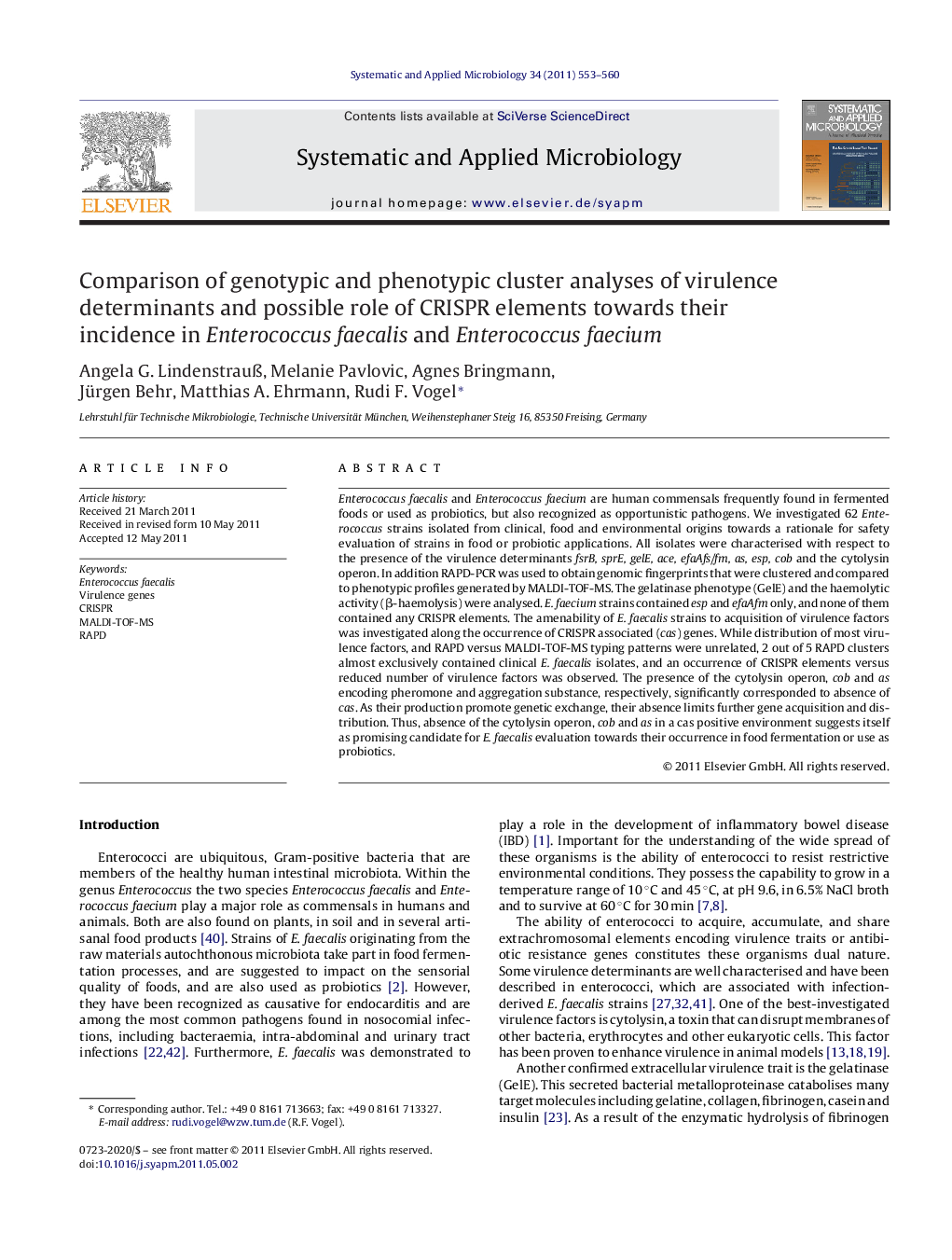| Article ID | Journal | Published Year | Pages | File Type |
|---|---|---|---|---|
| 2063176 | Systematic and Applied Microbiology | 2011 | 8 Pages |
Enterococcus faecalis and Enterococcus faecium are human commensals frequently found in fermented foods or used as probiotics, but also recognized as opportunistic pathogens. We investigated 62 Enterococcus strains isolated from clinical, food and environmental origins towards a rationale for safety evaluation of strains in food or probiotic applications. All isolates were characterised with respect to the presence of the virulence determinants fsrB, sprE, gelE, ace, efaAfs/fm, as, esp, cob and the cytolysin operon. In addition RAPD-PCR was used to obtain genomic fingerprints that were clustered and compared to phenotypic profiles generated by MALDI-TOF-MS. The gelatinase phenotype (GelE) and the haemolytic activity (β-haemolysis) were analysed. E. faecium strains contained esp and efaAfm only, and none of them contained any CRISPR elements. The amenability of E. faecalis strains to acquisition of virulence factors was investigated along the occurrence of CRISPR associated (cas) genes. While distribution of most virulence factors, and RAPD versus MALDI-TOF-MS typing patterns were unrelated, 2 out of 5 RAPD clusters almost exclusively contained clinical E. faecalis isolates, and an occurrence of CRISPR elements versus reduced number of virulence factors was observed. The presence of the cytolysin operon, cob and as encoding pheromone and aggregation substance, respectively, significantly corresponded to absence of cas. As their production promote genetic exchange, their absence limits further gene acquisition and distribution. Thus, absence of the cytolysin operon, cob and as in a cas positive environment suggests itself as promising candidate for E. faecalis evaluation towards their occurrence in food fermentation or use as probiotics.
